#Jews of Yemen/ Aden
Text
How Passover customs differ from one community to another
Passover begins on the night of 22 April, when Jews around the world sit down to the Seder, the ceremonial telling of the Exodus from Egypt. Communities follow remarkably similar customs at Passover, but there are differences, as Chabad explains. (With thanks: Leon)
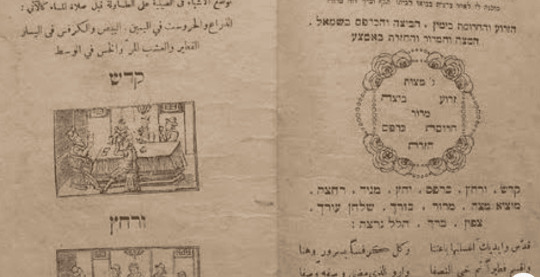
Egyptian Haggadah in Hebrew and Arabic1. Avoiding Beans and Rice: While it is well known that Ashkenazim universally avoid eating beans, legumes, corn and rice on Passover (this class of food is called kitniyot), not everyone knows that many Sephardic communities keep (some or all of) this custom as well. For example, Moroccans do not eat rice but do eat beans. Conversely, some Bukharian Jews do eat rice but do not eat beans or peas.Read: Why So Many Jews Don’t Eat Beans and Rice on Passover2. Eating Soft, Chewy Matzah:It’s fascinating to note that some Sephardic communities still bake soft matzah, which is significantly thicker than the cracker-like variety that has become virtually universal in recent centuries.3. Dipping in Lemon Juice: The most common custom these days is to dip the vegetable (karpas) in saltwater. However, some Jews, such as those from Kurdistan, traditionally dip it into sour lemon juice instead!4. Passing the Afikomen: Among the Jews of the Holy Land, there is a custom to take the afikomen and wrap it in a white cloth. This is placed on the right shoulder and transferred to the left shoulder. It is thus passed around the table from one to the next, with the last one to receive it reciting the verse: “Their kneading trays were bound in cloths on their shoulders.”That person then takes four paces and is asked: “Where have you come from?” to which they respond: “From Egypt.”
“And where are you going?”
“To Jerusalem.”Then all raise their voices and declare together: “Next year in Jerusalem!”Read: Why Do Some People Hide the Afikomen?5. Asking the Four Questions in Arabic: There’s no getting around the fact that the Seder is essentially a conversation, with the children asking questions and the Seder leader providing the answers—which is why many people say (parts of) the Seder in Arabic, Ladino, Farsi, or even English. So if you’d been a Jewish child in Yemen or Syria a generation or two ago, in all likelihood you would have learned to say the Four Questions in Judeo-Arabic.Read: The Four Questions in Nine Languages6. Waving the Seder Plate: Those using the Haggadah as recorded by Maimonides begin with the words, Bibhilu yatzanu miMitzayim, “We left Egypt in a great hurry.” Many Moroccans have the custom of saying these words again and again, each time waving the Seder plate over the head of another person at the Seder. Only after everyone has had the Seder plate waved over their heads, do they continue with Hay lachma anya, “This is the bread of suffering … ”Read: The Passover Seder Plate7. Having the Kids Symbolically Leave Egypt: Many have the custom to give each child a bundle of matzah to drape over their shoulders and then take part in the following exchange (in Arabic):
Where are you from?
From Egypt
Where are you going?
What do you carry?
Read: 14 Facts About Syrian Jews8. Watch Out for Those Scallions!

Among many Persian Jews, a favorite part of the Seder is playfully whipping each other with scallions. Why? To remember how the Jews were beaten by their Egyptian masters. Plus, it’s a great way to keep the kids awake and involved!
Read: 10 Facts About Persian Jews9. Smearing the Charoset on the Doorpost: Among some Moroccan Jews, it is customary to take some of the charoset left over after the Seder and smear it on the doorpost. It has been postulated that this is to recall the smearing of the blood on the Jewish doorposts back on the night of the Exodus (the very first Seder), as well as in anticipation of the Messianic era when, (according to the Book of Ezekiel,) sacrificial blood will be smeared on the doorway of the Holy Temple.1Read: 19 Facts About Moroccan Jews10. Announcing Moshiach to the Neighbors: If you were from Djerba, you may be accustomed to having one of your neighbors walk through the neighborhood with the afikomen tied up on his back, calling out, “Moshiach, son of David, is on his way!”May it happen soon!Read: 15 Moshiach Facts11. Gathering for Mimouna After Passover:

Moufleta pancakes and sweets at a Mimouna
After Passover concludes, Moroccan Jews hold a special celebration called mimouna. People visit each other’s homes to enjoy elaborately set tables, especially a crepe called moufleta.
The word mimouna means “luck.” On Passover, many people do not eat at each other’s homes since not everyone has the same standards. The post-Passover socialization demonstrates that there are no hard feelings.
Read article in full
42 notes
·
View notes
Note
loving your falafel research saga and just wanted to ask - something I remember hearing about falafel is that while Israeli culture definitely appropriated it, the concept of serving it in pita bread with salads, tahini etc. is a specifically Israeli twist on the dish. I wonder if you found/know anything about that?
The short answer is: it's not impossible, but I don't think there's any way to tell for sure. The long answer is:
The most prominent claim I've heard of this nature is specifically that Yemeni Jews (who had immigrated to Israel under 'right of return' laws and were Israeli citizens) invented the concept of serving falafel in "pita" bread in the 1930s—perhaps after they (in addition to Jews from Morocco or Syria) had brought falafel over and introduced it to Palestinians in the first place.
"Mizrahim brought falafel to Palestine"
This latter claim, which is purely nonsense (again... no such thing as Moroccan falafel!)—and which Joel Denker (linked above) repeats with no source or evidence—was able to arise because it was often Mizrahim who introduced Israelis to Palestinian food. Mizrahi falafel sellers in the early 20th century might run licensed falafel stands, or carry tins full of hot falafel on their backs and go from door to door selling them (see Shaul Stampfer on a Yemeni man doing this, "Bagel and Falafel: Two Iconic Jewish Foods and One Modern Jewish Identity," in Jews and their Foodways, p. 183; this Arabic source mentions a 1985 Arabic novel in which a falafel seller uses such a tin; Yael Raviv writes that "Running falafel stands had been popular with Yemenite immigrants to Palestine as early as the 1920s and ’30s," "Falafel: A National Icon," Gastronomica 3.3 (2003), p. 22).
On Mizrahi preparation of Palestinian food, Dafna Hirsch writes:
As Sami Zubaida notes, Middle Eastern foodways, while far from homogeneous, are nevertheless describable in a vocabulary and set of idioms that are “often comprehensible, if not familiar, to the socially diverse parties” [...]. Thus, for the Jews who arrived in Palestine from the Middle East, Palestinian Arab foods and foodways were “comprehensible, if not familiar,” even if some of the dishes were previously unknown to most of them. [...] They found nothing extraordinary or exotic in the consumption, preparation, and selling of foods from the Palestinian Arab kitchen. Therefore, it was often Mizrahi Jews who mediated local foods to Ashkenazi consumers, as street food vendors and restaurant owners. ("Urban Food Venues as Contact Zones between Arabs and Jews during the British Mandate Period," in Making Levantine Cuisine: Modern Foodways of the Eastern Mediterranean, p. 101).
Raviv concurs and furnishes a possible mechanism for this borrowing:
Other Mizrahi Jewish vendors sold falafel, which by the late 1930s had become quite prevalent and popular on the streets of Tel Aviv. [...] Tel Aviv had eight licensed Mizrahi falafel vendors by 1941 and others who sold falafel without a license. [FN: The Tel Aviv municipality granted vending license to people who could not make their living in any other way as a form of welfare.] Many of the vendors were of Yemenite origins, although falafel was unknown in Yemen. [FN: Many of the immigrants from Yemen arrived in Palestine via Egypt, so it is possible that they learned to prepare it there and then adjusted the recipe to the Palestinian version, which was made from chickpeas and not from fava beans (ṭaʿmiya). Shmuel Yefet, an Israeli falafel maker, tells about his father, Yosef Ben Aharon Yefet, who arrived in Palestine from Aden [Yemen] in the early 1920s and then traveled to Port Said in 1939. There he became acquainted with ṭaʿmiya, learned to prepare it, and then went back to Palestine and opened a falafel shop in Tel Aviv [youtube video].]*
But why claim that Yemeni Jews invented falafel (or at least that they had introduced it from Yemen), even though its adoption from Palestinian Arabs in the early days of the second Aliya, aka the 1920s (before Mizrahim had begun to immigrate in larger numbers; see Raviv, p. 20) was within living memory at this point (i.e. the 1950s)? Raviv notes that an increasing (I mean, actually she says new, which... lol) negative attitude towards Arabs in the wake of the Nakba (I mean... she says "War of Independence") created a new sense of urgency around de-Arabizing "Israeli" culture (p. 22). Its association with Mizrahi sellers allowed falafel to "be linked to Jewish immigrants who had come from the Middle East and Africa" and thus to "shed its Arab association in favor of an overarching Israeli identification" (p. 21).
Stampfer again:
On the one hand (with regard to immigrants from Eastern Europe), [falafel] underscored the break between immediate past East European Jewish foods and the new “Oriental” world of Eretz Israel.** At the same time, this food could be seen as a link with an (idealized) past. Among the Jewish public in Eretz Israel, Yemenite falafel was regarded as the most original and tastiest version. This is a bit odd, as falafel—whether in or out of a pita—was not a traditional Yemenite food, neither among Muslims nor among Jews. To understand the ascription of falafel to Yemenite Jews, it is necessary to consider their image. Yemenite Jews were widely regarded in the mid-20th century as the most faithful transmitters of a form of Jewish life that was closest to the biblical world—and if not the biblical world, at least the world of the Second Temple, which marked the last period of autonomous Jewish life in Eretz Israel. In this sense, eating “Yemenite” could be regarded as an act of bodily identification with the Zionist claim to the land of Israel. (p. 189)
So, when it's undeniable that a food is "Arab" or "Oriental" in origin, Zionists will often attribute it to Yemen, Syria, Morocco, Turkey, &c.—and especially to Jewish communities within these regions—because it cannot be permitted that Palestinians have a specific culture that differentiates them in any way from other "Arabs." A culinary culture based in the foodstuffs cultivated from this particular area of land would mean a tie and a claim to the land, which Zionist logic cannot allow Palestinians to possess. This is why you'll hear Zionists correct people who say "Palestinians" to say "Arab" instead, or suggest that Palestinians should just scooch over into other "Arab" countries because it would make no difference to them. Raviv's conclusion that the attribution of falafel to Yemeni immigrants is an effort to detach it from its "Arab" origins isn't quite right—it is an attempt to detach it, and thus Palestinians themselves, from Palestinian roots.
"Yemeni Jews first put falafel in 'pita'"
As for this claim, it's often attributed to Gil Marks: "Jews didn’t invent falafel. They didn’t invent hummus. They didn’t invent pita. But what they did invent was the sandwich. Putting it all together.” (Hilariously, the author of the interview follows this up with "With each story, I wanted to ask, but how do you know that?")
Another author (signed "Philologos") speculates (after, by the way, falsely claiming that "falafel" is the plural of the Arabic "filfil" "pepper," and that falafel is always brown, not green, inside?!):
Yet while falafel balls are undoubtedly Arab in origin, too, it may well be that the idea of serving them as a street-corner food in pita bread, to which all kinds of extras can be added, ranging from sour pickles to whole salads, initially was a product of Jewish entrepreneurship.
Shaul Stampfer cites both of these articles as further reading on the "novelty of the combination of pita, falafel balls, and salad" (FN 76, p. 198)—but neither of them cites any evidence! They're both just some guy saying something!
Marks had, however, elaborated a little bit in his 2010 Encyclopedia of Jewish Food:
Falafel was enjoyed in salads as part of a mezze (appetizer assortment) or as a snack by itself. An early Middle Eastern fast food, falafel was commonly sold wrapped in paper, but not served in the familiar pita sandwich until Yemenites in Israel introduced the concept. [...] Yemenite immigrants in Israel, who had made a chickpea version in Yemen, took up falafel making as a business and transformed this ancient treat into the Israeli iconic national food. Most importantly, Israelis wanted a portable fast food and began eating the falafel tucked into a pita topped with the ubiquitous Israeli salad (cucumber-and-tomato salad).
He references one of the pieces that Lillian Cornfeld (columnist for the English-language, Jerusalem-based newspaper Palestine Post) wrote about "filafel":
An article from October 19, 1939 concluded with a description of the common preparation style of the most popular street food, 'There is first half a pita (Arab loaf), slit open and filled with five filafels, a few fried chips and sometimes even a little salad,' the first written record of serving falafel in pita. [Marks doesn't tell you the title or page—it's "Seaside Temptations: Juveniles' Fare at Tel Aviv," p. 4.]
You will first of all notice that Marks gives us the "falafel from Yemen" story. I also notice that he calls Salat al-bundura "Israeli salad" (in its entry he does not claim that European Jewish immigrants invented it, but neither does he attribute it to Palestinian influence: the dish was originally "Turkish coban salatsi"). His encyclopedia also elsewhere contains Zionist claims such as "wild za'atar was declared a protected plant in Israel" "[d]ue to overexploitation" because of how much of the plant "Arab families consume[d]," and that Israeli cultivation of the crop yielded "superior" plants (entry for "Za'atar")—a narrative of "Arab" mismanagement, and Israeli improvement, of land used to justify settler-colonialism. He writes that Palestinians who accuse "the Jews" of theft in claiming falafel are "creat[ing] a controversy" and that "food and culture cannot be stolen," with no reflection on the context of settler-colonialism and literal, physical theft that lies behind said "controversy." This isn't relevant except that it makes me sceptical of Marks's motivations in general.
More pertinent is the fact that this quote doesn't actually suggest that this falafel vendor was Yemeni (or otherwise) Jewish, nor does it suggest that he was the first one to prepare falafel in pitas with "fried chips," "sometimes even a little salad," and "Tehina, a local mayonnaise made with sesame oil" (Cornfeld, p. 4). I think it likely that this food had been sold for a while before it was described in published writing. The idea that this preparation is "Israeli" in origin must be false, since this was before the state of "Israel" existed—that it was first created by Yemeni Jewish falafel vendors is possible, but again, I've never seen any direct evidence for it, or anyone giving a clear reason for why they believe it to be the case, and the political reasons that people have for believing this narrative make me wary of it. There were Palestinian Arab falafel vendors at this time as well.
"Chickpea falafel is a Jewish invention"
There is also a claim that falafel originated in Egypt, where it was made with fava beans; spread to the Levant, including Palestine, where it was made with a combination of fava beans and chickpeas; but that Jewish immigration to Israel caused the origin of the chickpea-only falafal currently eaten in Palestine, because a lot of Jewish people have G6PD deficiencies or favism (inherited enzymatic deficiencies making fava beans anywhere from unpleasant to dangerous to eat)—or that Jewish populations in Yemen had already been making chickpea-only falafel, and this was the falafel which they brought with them to Palestine.
As far as I can tell, this claim comes from Joan Nathan's 2001 The Foods of Israel:
Zadok explained that at the time of the establishment of the state, falafel—the name of which probably comes from the word pilpel (pepper)—was made in two ways: either as it is in Egypt today, from crushed, soaked fava beans or fava beans combined with chickpeas, spices, and bulgur; or, as Yemenite Jews and the Arabs of Jerusalem did, from chickpeas alone. But favism, an inherited enzymatic deficiency occurring among some Jews—mainly those of Kurdish and Iraqi ancestry, many of whom came to Israel during the mid 1900s—proved potentially lethal, so all falafel makers in Israel ultimately stopped using fava beans, and chickpea falafel became an Israeli dish.
Gil Marks's 2010 Encyclopedia of Jewish Food echoes (but does not cite):
Middle Eastern Jews have been eating falafel for centuries, the pareve fritter being ideal in a kosher diet. However, many Jews inherited G6PD deficiency or its more severe form, favism; these hereditary enzymatic deficiencies are triggered by items like fava beans and can prove fatal. Accordingly, Middle Eastern Jews overwhelmingly favored chickpeas solo in their falafel. (Entry for "Falafel")
The "centuries" thing is consistent with the fact that Marks believes falafel to be of Medieval origin, a claim which most scholars I've read on the subject don't believe (no documentary evidence, + oil was expensive so it seems unlikely that people were deep frying anything). And, again, this claim is speculation with no documentary evidence to support it.
As for the specific modern toppings including the Yemeni hot sauce سَحاوِق / סְחוּג (saHawiq / "zhug"), Baghdadi mango pickle عنبة / עמבה ('anba), and Moroccan هريسة / חריסה ("harissa"), it seems likely that these were introduced by Mizrahim given their place of origin.
*You might be interested to know that, despite their Jewishness mediating this borrowing, Mizrahim were during the Mandate years largely ethnically segregated from Eastern European Zionists, who were pushing to create a "new" European-Israeli Judaism separate from what they viewed as the indolence and ignorance of "Oriental" Jewishness (Hirsch p. 101).
This was evidenced in part by Europeans' attitudes towards the "Oriental" diet. Ari Ariel, summarizing Yael Raviv's Falafel Nation, writes:
Although all immigrants were thought to require culinary education as an aspect of their absorption into the new national culture, Middle Eastern Jews, who began to immigrate in increasing numbers after 1948, provoked greater anxiety on the part of the state than did their Ashkenazi co-religionists. Israeli politicians and ideologues spoke of the dangers of Levantization and stereotyped Jews from the Middle East and North Africa as primitive, lazy, and ignorant. In keeping with this Orientalism, the state pressured Middle Easterners to change their foodways and organized cooking demonstrations in transit camps and new housing developments. (Book review, Israel Studies Review 31.2 (2016), p. 169.)
See also Esther Meir-Glitzenstein, "Longing for the Aromas of Baghdad: Food, Emigration, and Transformation in the Lives of Iraqi Jews in Israel in the 1950s," in Jews and their Foodways:
[...] [T]he Israeli establishment was set on “educating” the new immigrants not only in matters of health and hygiene, [77] but also in the realm of nutrition. A concerted propaganda effort was launched by well-baby clinics, kindergartens, schools, health clinics, and various organizations such as the Women’s International Zionist Organization (WIZO) and the Organization of Working Mothers in order to promote the consumption of milk and dairy products, in particular. [78] (These had a marginal place in Iraqi cuisine, consumed mainly by children.) Arab and North African cuisines were criticized for being not sufficiently nutritious, whereas the Israeli diet was touted as ideal, as it was western and modern. […] [T]he assault on traditional Middle Eastern cuisines reflected cultural arrogance yet another attempt to transform immigrants into “new Jews” in accordance with the Zionist ethos.
Thus, European table manners were presented as the norm. Eating with the hands was equated with primitive behavior, and use of a fork and knife became the hallmark of modernity and progress. (pp. 100-101)
[77. On health matters, see Davidovich and Shvarts, “Health and Hegemony,” 150–179; Sahlav Stoller-Liss, “ ‘Mothers Birth the Nation’: The Social Construction of Zionist Motherhood in Wartime in Israeli Parents’ Manuals,” Nashim 6 (Fall 2003), 104–118.]
[78. On propaganda for drinking milk and eating dairy products, see Mor Dvorkin, “Mif’alei hahazanah haḥinukhit bishnot ha’aliyah hagedolah: mekorot umeafyenim” (seminar paper, Ben-Gurion University, 2010).]
**On the desire to shed "old, European" "Jewish" identity and take on a "new, Oriental" "Hebrew" one, and the contradictory impulses to use Palestinian Arabs as models in this endeavour and to claim that they needed to be "corrected," see:
Itamar Even-Zohar, "The Emergence of a Native Hebrew Culture in Palestine, 1882—1948"
Dafna Hirsch, "We Are Here to Bring the West, Not Only to Ourselves": Zionist Occidentalism and the Discourse of Hygiene in Mandate Palestine"
Ofra Tene, "'The New Immigrant Must Not Only Learn, He Must Also Forget': The Making of Eretz Israeli Ashkenazi Cuisine."
#sorry for this but you should've known better than to ask me about falafel at this stage in my life#falafel research saga
146 notes
·
View notes
Text
In 2023, Tel Aviv celebrated its first ever Jachnun Festival. Celebrity pastry chefs, jachnun joints and hungry crowds gathered at the hip settings of the city’s harbor, enjoying every possible version of the humble star of the party, the Shabbat Yemenite pastry. Alongside classic jachnun, visitors could try stuffed jachnun, spelt flour jachnun and even gluten-free ones. A stand offered Yemenite spicy sauce (zhug) tastings, and another featured a chili pepper eating competition. And to wash it all down, jachnun lovers were offered spiced black coffee, and fig and date arak liquor.
Jachnun is a slightly sweet rolled pastry, made of very thin layers of dough that are brushed with clarified butter. It is the Shabbat dish of the Jews of Aden, in today’s Yemen, and is baked overnight on Friday at a low temperature then eaten for breakfast on Saturday morning.
Israeli food writers wondered how Tel Aviv hasn’t had a jachnun festival until now, but my question is quite different: How did this unassuming pastry make its way from Aden to the heart of Israeli culinary consensus in just 75 short years? It stands there in pride alongside other classics like shakshuka, schnitzel, hummus and chicken soup. When and how did that happen?
First, to clarify, the famous Yemenite jachnun is actually from Aden, not Yemen. (Aden, which was the capital of South Yemen, became part of the country now known as Yemen only in 1990 after the unification of North Yemen and South Yemen.) The Adenite and Yemenite (mainly from around Sana’a) Jewish communities were separate and had different traditions.
Adenite and Yemenite Jews met for the first time in the Hashed (or Geula, “redemption” in Hebrew) transit camp arranged by The American Jewish Joint Distribution Committee in 1949 ahead of Operation Magic Carpet that brought them to Israel.
“In Hashed, with ingredients brought by The Joint, is where Yemenites first learned from the Adeni how to make jachnun,” said Moshe David, an Israeli of Adanite roots, a jeweler and author of the cookbook “Disappearing Flavors of the South.”
“More Yemenites learned how to make the dish in the camps in Israel,” where Yemenite and Adenite Jews lived together for years, he told me.
For hundreds of years Aden was a cosmopolitan strategic harbor city. It was ruled by the Ottomans and then by the British. Moshe believes that jachnun originated from an Ottoman pastry called gül böreği (rose-shaped borek). The pastry is made with yufka, a thin dough, thicker than phyllo, that’s used for many Turkish pastries, and is stretched to an almost transparent leaf, then spread with fat, just like jachnun. The original gül böreği, though, is stuffed with meat, while jachnun is only brushed with fat and then rolled.
In the past, jachnun was actually served as a sweet dish, topped with honey (and later, in Israel, with sugar).
“They used to serve it with halva or Turkish delight,” said David. “That’s what convinced me the origin is Ottoman. They would also serve it with quince jam,” a testament of the Adenite connection to the Silk Road and Persian cuisine.
In search for the origins of the dish, I found an unusual version of jachnun in two of Molly Bar-David’s books. Bar-David was a Jewish American who emigrated to Israel in the 1940s and documented Jewish dishes of immigrants that arrived in Israel from all across the Jewish Diaspora. She quotes a recipe for ghihinoon (Yemenite Cakes) from her Yemenite housekeeper, Margalit, who used to sprinkle chopped nuts, jam or cottage cheese on the dough before rolling it and baking.
I should add that the 1964 book is packed with condescending comments toward the many Mizrahi and Sephardi Jews mentioned in the book. Margalit (last name is not provided) was not spared. In general, this was in line with the way many Ashkenazi Jews at the time viewed Jews from Arab and Muslim countries.
Moshe thinks that Bar-David mistakenly mixed g’hin, “dough” in Yemenite, with ghihinoon. But when I asked a Yemenite-Israeli Facebook group about it, one member said she too spreads the dough with jam before baking. Still, most Yemenite Israelis in the group found that idea amusing, and jokingly suggested serving jachnun with whipped cream and chocolate sauce.
Jachnun evolved into a savory course, and became nationwide phenomena, fairly recently, in the 1980s when a chain of Yemenite restaurants named Nargila (hookah) took Israel by storm. Nargila offered a limited menu, and jachnun and malawach were the stars. The pastries were served with grated tomatoes mixed with zhug, which became the standard for Yemenites and even for some Adenite Jews.
These days, jachnun is available in the freezer aisle at any supermarket in Israel, offering an inferior but easy option for those daunted by the labor-intense process of making the dish at home. On the weekends, fresh jachnun is readily available at pop-up roadside stands, cafes and even as part of the famous Israeli breakfast buffet in many hotels. This modest dish has officially become an Israeli staple.
17 notes
·
View notes
Text
the people saying that the US "Started a war in Yemen" genuinely know nothing about the situation, there was already a war in Yemen, the US is in the process of ending a war in Yemen and returning peace to the Yemeni people, the US is allied with the Yemeni government and has been training their military on how to fight the Houthis for years.
the reason the US struck now is because driving away shipping from the Red Sea is downright evil, several countries require food shipped from the Red Sea and the Gulf of Aden, including Jordan, Eritrea Djibouti, Ethiopia, Somaliland, and Yemen itself. If you are against the bombing you value the lives of a few hundred terrorists more than millions of civilians in all of these nations.
The Houthis are not fighting for Palestine, they never have and they never will, the Houthis were attacking ships in the red sea for the same reason any pirate group does anything, money. In this case to fund their civil war against the Yemeni government. The Houthis are fairly open that the reason they oppose Israel is not because of some liberal foreign policy or even to defend other Arabs, it's because they are violently opposed to the Jewish people. Their slogan is literally "God is the greatest, Death to America, Death to Israel, A Curse Upon the Jews, Victory to Islam" in Arabic.
7 notes
·
View notes
Text
Events 1.13 (after 1940)
1942 – Henry Ford patents a soybean car, which is 30% lighter than a regular car.
1942 – World War II: First use of an aircraft ejection seat by a German test pilot in a Heinkel He 280 jet fighter.
1950 – British submarine HMS Truculent collides with an oil tanker in the Thames Estuary, killing 64 men.
1950 – Finland forms diplomatic relations with the People's Republic of China.
1951 – First Indochina War: The Battle of Vĩnh Yên begins.
1953 – An article appears in Pravda accusing some of the most prestigious and prominent doctors, mostly Jews, in the Soviet Union of taking part in a vast plot to poison members of the top Soviet political and military leadership.
1958 – The Moroccan Army of Liberation ambushes a Spanish patrol in the Battle of Edchera.
1963 – Coup d'état in Togo results in the assassination of president Sylvanus Olympio.
1964 – Anti-Muslim riots break out in Calcutta, in response to anti-Hindu riots in East Pakistan. About one hundred people are killed.
1964 – In Manchester, New Hampshire, fourteen-year-old Pamela Mason is murdered. Edward Coolidge is tried and convicted of the crime, but the conviction is set aside by the landmark Fourth Amendment case Coolidge v. New Hampshire (1971).
1966 – Robert C. Weaver becomes the first African American Cabinet member when he is appointed United States Secretary of Housing and Urban Development.
1968 – Johnny Cash performs live at Folsom State Prison.
1972 – Prime Minister Kofi Abrefa Busia and President Edward Akufo-Addo of Ghana are ousted in a bloodless military coup by Colonel Ignatius Kutu Acheampong.
1977 – Japan Air Lines Cargo Flight 1045, a Douglas DC-8 jet, crashes onto the runway during takeoff from Ted Stevens Anchorage International Airport, killing five.
1978 – United States Food and Drug Administration requires all blood donations to be labeled "paid" or "volunteer" donors.
1982 – Shortly after takeoff, Air Florida Flight 90, a Boeing 737 jet, crashes into Washington, D.C.'s 14th Street Bridge and falls into the Potomac River, killing 78 including four motorists.
1985 – A passenger train plunges into a ravine in Ethiopia, killing 428 in the worst railroad disaster in Africa.
1986 – A month-long violent struggle begins in Aden, South Yemen between supporters of Ali Nasir Muhammad and Abdul Fattah Ismail, resulting in thousands of casualties.
1988 – Lee Teng-hui becomes the first native Taiwanese President of the Republic of China.
1990 – Douglas Wilder becomes the first elected African American governor as he takes office as Governor of Virginia in Richmond, Virginia.
1991 – Soviet Union troops attack Lithuanian independence supporters in Vilnius, killing 14 people and wounding around 1,000 others.
1993 – Space Shuttle program: Endeavour heads for space for the third time as STS-54 launches from the Kennedy Space Center.
1993 – The Chemical Weapons Convention (CWC) is signed.
1993 – Operation Southern Watch: U.S.A.F., U.S.N., R.A.F. and French Air Force jets attack AAA and SAM sites in Southern Iraq.
1998 – Alfredo Ormando sets himself on fire in St. Peter's Square, protesting against homophobia.
2000 – A Short 360 aircraft chartered by the Sirte Oil Company crashes off the coast of Brega, Libya, killing 21.
2001 – An earthquake hits El Salvador, killing more than 800.
2012 – The passenger cruise ship Costa Concordia sinks off the coast of Italy due to the captain Francesco Schettino's negligence and irresponsibility. There are 32 confirmed deaths.
2018 – A false emergency alert warning of an impending missile strike in Hawaii causes widespread panic in the state.
2020 – The Thai Ministry of Public Health confirms the first case of COVID-19 outside China.
2021 – Outgoing U.S. President Donald Trump is impeached for a second time on a charge of incitement of insurrection following the January 6 United States Capitol attack one week prior.
1 note
·
View note
Link
#sephardic#sephardic jews#pregnancy#baby shower#kortadura de fashadura#the cutting of the swaddling clothes#Algeria#Morocco#Algerian Jews#Moroccan Jews#Amadiya Kurdistan#Kurdistan#Yemen#Aden#Yemeni Jews
8 notes
·
View notes
Photo
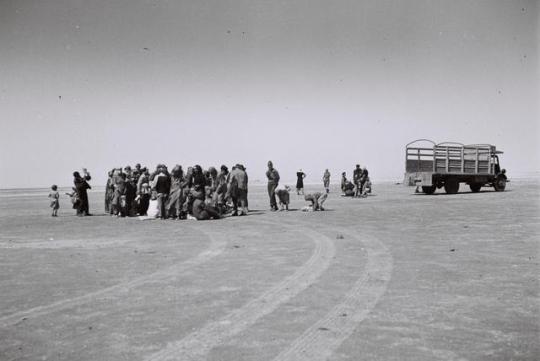
Yemenite families gathering before being transferred by truck to the “joint organization” reception camp, near Aden ; 1949. x
Nineteen of the last remaining Jews in Yemen were airlifted to Israel on March 21, 2016, by the Jewish Agency. The secret operation, which rescued all but 50 Yemeni Jews, had been in planning for over a year and included coordination with the U.S. State Department. The remaining Jews refused to leave, even though transportation to Israel was offered.
24 notes
·
View notes
Photo

Yemenite Jews walking to Aden, the site of a transit camp, ahead of their emigration to Israel in 1949
58 notes
·
View notes
Text
1937
Jan 1 Anastasio Somoza García becomes President of Nicaragua. He was head of the National Guard during the February 23, 1934 murder of the revolutionary leader, Sandino.
Jan 13 Nationalists in Poland have rioted, beating up Jews. In parliament, Colonel Meidzinski says there would be no problem if Poland had only 50,000 Jews but, he complains, "there are 3,000,000." The question arises where to send the Jews. (Nicholson Baker, Human Smoke, p. 66)
Jan 16 Mussolini has asked a German journalist how Hitler is and then speaks of communism as threatening to destroy Europe. He describes democracies as "propagators of the communist bacillus." He adds that "Democracies are sand, shifting sand... Only Fascist Italy and Nazi Germany can save Europe." (David I Kertzer, The Pope and Mussolini, p 257-58.)
Jan 23 In the Soviet Union, 17 Bolsheviks are among those on trial accused of participating in a plot led by Leon Trotsky to overthrow the Stalin regime and to assassinate its leaders.
Jan 30 Hitler formally withdraws Germany from the Versailles Treaty. This includes Germany no longer making reparation payments. He demands a return of Germany's colonies.
Jan 31 In the Soviet Union, 31 accused of Trotskyism are executed.
Feb 8 In Spain, Franco's troops capture Malaga.
Feb 11 In the US, a sit-down strike ends with General Motors recognizing the United Automobile Workers Union.
Mar 19 Pope Pius XI publishes an encyclical titled Divini Redemptoris, condemning atheistic Communism.
Mar 21 Britain's Prime Minister Stanley Baldwin says, "I know some of you think I should speak more roughly to Hitler than I do, but have you reflected that the reply to a stiff letter might be a bomb on your breakfast tables?"
Apr 1 The city of Aden, in Yemen, on the shore of the Arabian Sea near the mouth of the Red Sea, becomes a British crown colony.
Apr 26 Germany and Italy are allied with Franco and the fascists in Spain. German and Italian airplanes bomb the city of Guernica, killing more than 1,600.
May 6 The German zeplin Hindenburg bursts into flames when landing at Lakehurst, New Jersey.
May 8 In Barcelona, six days of warfare among leftists has occurred, provoked by Stalin despite Popular Front rhetoric about pluralism. What will be called "Barcelona May Days" will be described by the socialist George Orwell in his book Homage to Catalonia. Orwell has been with the POUM, a leftist party closer to Trotsky than to Stalin. Spain's leftist government, beholden to the Soviet Union for support, will ban the POUM. Orwell will have to run for his life and will be opposed to Stalinism, expressed in his two books 1984 and Animal Farm.
May 27 In California, the Golden Gate Bridge opens to pedestrian traffic.
May 28 In Britain, Neville Chamberlain becomes prime minister.
Jun 3 The Duke of Windsor, Prince Edward, former King Edward VIII, marries Wallis Simpson.
Jul 2 Amelia Earhart and navigator Fred Noonan disappear over New Guinea.
Jul 4 At an International Writers Congress in Paris, Ernest Hemmingway says that fascist states "cannot produce good writers." Fascism, he says, "is a lie told by bullies." At this congress, Langston Hughes says, “We are the people who have long known in actual practice the meaning of the word Fascism… Yes, we Negroes in America do not have to be told what Fascism is in action. We know. Its theories of Nordic supremacy and economic suppression have long been realities to us.”
Jul 7 In China, the Battle of Lugou Bridge begins. It's between Japanese occupation forces and the Chinese and begins what will be called the Sino-Japanese War.
Jul 22 The US Senate puts an end to President Roosevelt's proposal to add more justices to the Supreme Court.
Aug 5 Japan's government expresses concern that 182 US airmen are to fly warplanes in China.
Aug 5 Stalin's regime begins periodic campaigns that will be called the Great Purge and will kill more than 724,000 Soviet citizens deemed enemies of the state and the Soviet revolution. This involves what the Hitler regime is not yet doing: shooting people. An on-going search for enemies includes Polish people suspected of belonging to an anti-Soviet conspiracy called the Polish Military Organization. Attachment to Polish culture or to Roman Catholicism have become grounds for suspicion. A method used by the NKVD (Soviet police) against the Polish plot and network of spies will be torture of an individual in front of a group of suspects. When the victim confesses the others will then be asked to confess. (Timothy Snyder, Bloodlands, p 95.)
Aug 12 In China, Chiang Kai-shek's government orders a general offensive against the Japanese.
Aug 14 China's 87th division, with a nascent airforce, attacks Japanese military positions around Shanghai.
Aug 21 Japan's war with China has encouraged China to sign a military pact with the Soviet Union. China's Communist Party senses a new lease on life.
Aug 26 The Japanese are bombing targets in Shanghai. They attack a car carrying Britain's ambassador.
Aug 28 Japan erects a naval blockade against Chinese ships going to and from Chinese ports. Japan says that "peaceful commerce carried on by third powers will be fully respected."
Aug 30 Chinese aircraft mistakingly attack the USS President Hoover. One US crewman is killed and several passengers and crew are injured.
Oct 5 With Japan and Italy in mind, President Roosevelt calls for an international "quarantine of the aggressor nations." American isolationists complain that distinguishing between "peace-loving" and "warlike" nations is not neutrality but taking sides.
Oct 6 The League of Nations condemns Japan's actions in China.
Oct 10 Winston Churchill writes: "It would be a dangerous folly for the British people to underrate the enduring position in world-history which Mussolini will hold, or the amazing qualities of courage, comprehension, self-control and perseverance which he exemplifies." (Nicholson Baker, Human Smoke, p. 73.)
Nov 5 In Spain near León, Franco's forces execute perhaps as many as 35,000.
Nov 6 Italy joins the Anti-Comintern Pact, created by Germany and Japan in 1936.
Nov 9 Japanese troops take Shanghai.
Nov 10 In Brazil, Getúlio Vargas has been speaking of the dangers of Communism. He begins his dictatorship, proclaiming the creation of a New State (Estado Novo).
Nov 17 As a diplomat for the new government of Neville Chamberlain, Lord Halifax visits Herman Goering in Germany. Halifax also visits Hitler, who pledges his support of the British empire. Hitler offers advice on how to deal with those in India seeking independence. Kill Gandhi, he advises, and, if that is not enough, kill the other leaders too. Lord Halifax's friend, Henry Cannon, will report that Halifax "likes all of the Nazi leaders, including Goebbels." Cannon reports that Halifax "thinks the regime absolutely fantastic."
Dec 7 Japanese troops are at Nanjing's outer defenses.
Dec 11 Italy withdraws from the League of Nations.
Dec 12 Japanese aircraft attack the USS Panay, a gunboat that is motoring on the Yangzi River, away from Nanjing. Three are killed and 43 sailors and 5 civilians wounded. The Japanese claim that the US flag was not seen. They agree to pay an indemnity. In the US, public opinion becomes more hostile toward the Japanese.
Dec 12 The New York Times reports:, "When during the Second Italo-Abyssinian War (October 1935 to May 1936), the League accused Benito Mussolini's soldiers of targeting Red Cross medical tents, Mussolini responded that Ethiopians were not fully human, therefore the human rights laws did not apply."
Dec 13 Nanjing falls to the Japanese, with Chinese soldiers fleeing from the city or rushing to change into civilian clothes.
Dec 21 Walt Disney's Snow White and the Seven Dwarfs, the first feature-length animated cartoon, becomes a smash hit.
Dec 29 Ireland's Constitution, adopted by plebiscite, goes into effect. It establishes an independent state based on a system of representative democracy. It bans divorce but guarantees certain fundamental rights.
to 1936 | to 1938
0 notes
Text
Encountering a tiger by the Well: Stories from Rural Yemenite Communities
Now comes the story of a community that is so distinct and fascinating that it deserves its own blog. The Yemenite Jewish community is large in size and presence, and historically and culturally different from the general Sephardic diaspora. However, for various reasons, mainly the human need to classify, Yemenite Jews are often included under the Sephardic umbrella.
Living in a fairly remote location shaped the distinct folklore, liturgy and cuisine (more on that later) of the Yemenite community. And although Yemenite Jews were not detached from the major events happening in the Jewish world, local factors such as Yemen’s history, diverse terrain (jungle, seaside or dessert) and wildlife were the most influential. Another striking characteristic of the Yemenite Jewry is its demography: the majority of Yemenite Jews resided in villages scattered around the land - often one or two families per village. However, despite being surrounded by a (frequently hostile) Muslim majority, Yemenite Jews maintained a very observant Jewish lifestyle. A book that portrays this arduous and yet unique existence in the first half of the twentieth century will be reviewed later in this post entry. But first, here is a brief overview of the Yemeni community.
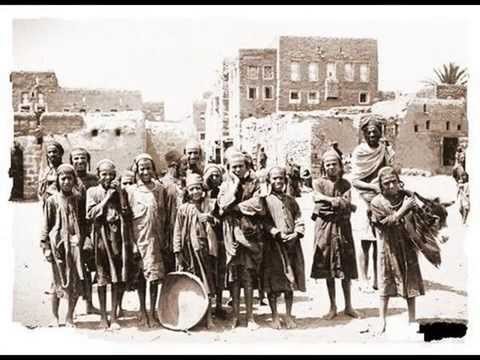
Historical Glance: From Queen Sheba to Zionist Aspirations
Jewish Monarchy in Late Antiquity
Yemen’s current status as a poor and divided nation obscures the country’s glorious past as an ancient civilization known as the fertile oasis of the Arabian Peninsula. Jews immigrated to this promising land fairly early. Biblical texts (Book of Ezra) indicate a Jewish settlement in Yemen circa the destruction of the First Temple (587 BCE). Another legend says that Yemeni tribes converted to Judaism after the Queen of Sheba's visit to King Solomon.Yet, historians assert that the Jewish immigration took place later, starting in the second century CE. Regardless of this dispute, all sides consent that Jews were a key political and economic force during the pre-Islamic era.
A prime example of their power occurred in the 6thcentury when the kingdom’s aristocracy converted to Judaism. Some sources suggest that the king himself, Joseph Dhu Nuwas,was zealous for Judaism.According to these sources, Dhu Nuwas sought to convert Yemeni Christians to Judaism, but they refused to renounce Christianity. What exactly happened afterwards remains murky given the conflicting accounts. Yet, it appears that Dhu Nuwas died as part of the religious rivalries. His death ended the Jewish hegemony in Yemen.
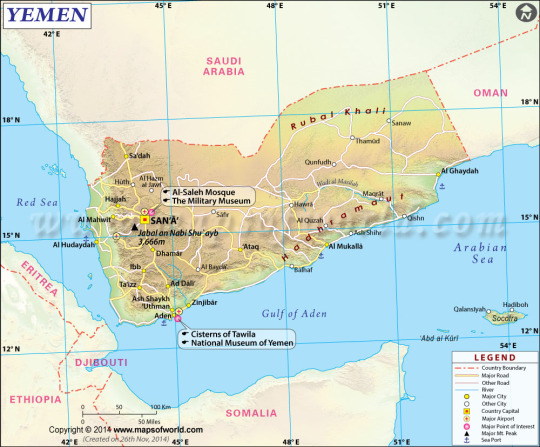
Maimonides and Messianic Aspirations
The 7thcentury Muslim conquest of Yemen marked a negative shift in the history of the Jews in Yemen. Historical knowledge about these early stages of the Muslim reign in Yemen is limited, but several sources from the Cairo Geniza indicate that the Jewish community was in a plight. The new Sharia law defined Jews as Dhimmis- or second class citizens. In essence, Jews were granted with freedom of worship but were subjected to additional tax and other (often humiliating) restrictions.
Although Islamic law categorized Jews as a protected minority, Jews suffered ongoing persecution under the various Muslim rulers. From the 10thcentury on, the living conditions of Yemeni Jews deteriorated significantly as the relatively tolerant Sunni sovereign was overthrown by the radical Zaidis (a Shia sect) dynasty. In the 1160s, the local ruler Iben Mahdi forced Jews to convert to Islam. As a result, a false prophet arose, proclaiming the amalgamation of Judaism and Mohammedanism. This messianic revival evoked the concern of Maimonides. The latter addressed the Jews of Yemen in an epistle, entitled Iggeret Teman,in which he urged them to remain faithful to their religion. The intervention of a scholar of that scale had a great impact on the Jews of Yemen; the false prophet was condemned, and thename of Maimonides was added to the Yemenite version of the Ḳaddish prayer. The defeat of Iben Mahdi in battle in 1173 and the conquest of Yemen by the brother of Saladin brought relief to Jewish community and those who had been forced to convert reverted to Judaism. Around this time, two sub groups were formed among the local community: theShami, who partly assimilated into the Sephardic culture and liturgy; and the Baladi, who followed Maimonides, especially the rules in his “Mishneh Torah”. Both sub groups fostered the mysticism prominent in Sephardic traditions.
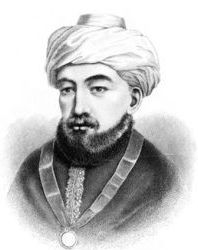
Above: Maimonides
The Modern Era: Zionism as the New Messianism
Fasting forward to modernity, the 19thcentury brought dramatic change in the life of the Yemenite community. At this time, the population was divided between the minority, who lived in urban-gated centers (such as, Sana and Aden), and those who resided in remote villages surrounded by Muslim neighbors. Commerce and craftsmanship (including carpenters and blacksmith) were common trades. Regardless of location and profession, the life of the average man was rough. The community was subjected to the jurisdiction of the local Imam (Muslim Zaidileader), and suffered from endless restrictions, limiting their transportation and monetary transactions.
The most notorious act enforced by the Zaidi rulers was the Orphan’s decree, which mandated the Zaidi government to take under its protection and to educate in Islamic ways anyJewish child whose parents had died when he or she was a minor. Accounts from this period portray numerous cases of abduction and forced conversion of children. As a measure of protection, child marriage became increasingly prevalent. Another consequence of this plight was yet again intense messianism, including three incidents of pseudo-messiahs in the second half of the 19thcentury.
Under these circumstances, Zionist ideology spread by emissaries from Palestine found a good nesting ground. During the period from 1881 to 1914, about 10% of the Yemeni Jews immigrated to Palestine (the rest immigrated in the late 1940’s and 1950’s). Many died during the dangerous journey, and those who made it were recruited to work as cheap labor in the new Zionist settlements. They were housed in barns and provided with meager food and water. The exploitation of Yemenite Jews reveals an ugly chapter in the history of the early Zionist history. This tragedy opened the path to even more horrifying cases of discrimination, and mainly to the explosive affair of the possible abduction of Yemenite babies and toddlersin 1950’s Israel. According to this controversial case, the abducted Yemeni children were sold or given to Ashkenazi families, mainly to Holocaust survivors who could not have kids. The State of Israel firmly denies all allegations.

Above: Yemeni workers in Kinneret
Sapri Tama Tamimaby Sarit Gradwohl
In the context of the turmoil of the first half of the 20thcentury, the book Sapri Tama Tamimaby Sarit Gradwohl offers a fascinating lens to explore the world of rural Yemenite Jews and their uneasy immigration process to Israel. Gradwohl recorded the personal accounts of her grandparents (mainly her grandma) and weaved them into a captivating novel. Gradwohl’s family memoire begins in a small isolated village in Yemen. Her grandmother, Hamama, is then a young child curious about the world. Through her childhood memories, we discover the rough existence, including constant harassments by Yemenite soldiers, the limited food and the presence of wildlife. One of the saddest stories in the book is the death of Hamama’s younger sister from a heart failure after encountering a tiger by a well.
As Hamama matures she falls in love with her cousin, Hassan, a resourceful and fervent Zionist. Soon after their marriage, they embark on the treacherous journey to Israel, then mandatory Palestine. In 1942, they finally made it to the Promised Land, only to be placed in a transit camp by Haifa. Then begins their second adventure. They face many challenges, including living in tents for several years and suffering from prejudice by the Ashkenazi population. In addition, coming from traditional households, they are also bewildered by secular Judaism and cannot grasp how the Kibbutznikim and the Zionist leadership strayed so far from Jewish law. Yet, despite the barriers and through hard work and perseverance, Hamama and Hassan built a happy life together with a strong sense of family.
Last November, I had the pleasure to meet with Sarit Gradwohl in her house in Skokie. In our fascinating conversation, Gradwohl shared additional insights about her grandparents’ immigration to Israel. From her perspective, they acknowledge that they were mistreated in certain times, but they never labeled these experiences as discrimination nor did they harbored resentment towards the State of Israel. They remained, she proclaimed, innocent in heart and faithful to their core values: the love for Judaism and the land of Israel.

Above: Gradwhol and her Grandfather
Lasis-A Dish Worth Fainting
When I met with Gradwohl, we talked more about her grandma’s special delicacies, particularly Asid Va’zom, a dairy soup/ porridge eaten at the end of Yom Kippur, and her aromatic lentil soup. She also told me about her grandma’s Jachnun making techniques. This dense pastry dish became a Shabbat breakfast staple in Israel, served savory with mashed tomato and hardboiled egg or sweet with honey. Some buy it frozen, but it is best homemade cooked overnight on the Plata (the Shabbat hot plate).
Despite the popularity of doughy Yemeni dishes, such as Jachnun and Malawach,Gradwohl debunked the common misconception in Israel that the key ingredient in Yemeni food is starch. Backed with academic research, Gradwohl argued that traditional Yemeni cuisine is mainly composed of fish, legume and grain dishes. The use of puff pastry type dough was a later Turkish influence. Gradwohl also added that Yemenite families did not suffer as much as Ashkenazi families during the austerity period in 1950’s Israel, in which eggs and dairy products were rationed. Since Yemenite women were skilled in making beans and lentils dishes, they were able to create nourishing meals using simple plant based ingredients.

Above: Jachnun
An example of a basic legume dish is the Lasis, a slow cooked bean dish served on Shabbat. One of the most endearing stories in the book is the anecdote about little Hamama marching for hours with a jug of Lasis on her head. When she finally arrives home, her siblings falsely accuse her of stealing the favorite dish. Infuriated she runs away outside of the village, where she is nearly attacked by monkeys. Overly excited she runs back home, and receives the Michva treatment- a tribal remedy used to calm the agitated. After the hot iron rod is placed on her head, she faints.
Lasis might not be a reason for a family drama, but it is definitely worth making at home. It is easy to make, satisfying and delicious. Below, is a recipe recommended by Gradwohl. Slow cooking the beans overnight definitely helps to accentuate the flavor.
Lasis
Ingredients
2 cups - red kidney beans
0.5 tsp - baking soda
Salt
water
4 hard-boiled eggs
Cumin
Schug(Yemeni hot sauce)/ Jalapeno based hot sauce
Making
1. Soak beans overnight with baking soda
2. Drain and rinse beans
3. Place beans in slow cooker or pot with hard-boiled eggs and salt, cover with water and let it cook very slowly
4. Serve with a generous sprinkle of cumin and drizzle some chug


Above: Lasis in the making
The Great Yemeni Cultural Contribution
This blog entry would not be complete without paying tribute to the rich cultural contribution made by Yemeni Jews to Israeli society. From the colorful Hinna (pre wedding) celebrations to Yemenite folk dancing, Yemenite Jews deeply influenced mainstream Israeli culture and particularly Israeli music. In the sea of great artists, I would like to highlight three particularly inspiring ones.
Zohar Argov (1955-1987)
In his short sad life Zohar Argov redefined the Israeli music scene. His distinct sound brought the Yemeni Piyutim (liturgical chants) from the synagogue into the ears of every Israeli, and created the genre widely known today as Muzika Mizrachit (Oriental Music). Initially, his music was turned down by the local radio stations, but through pirate cassettes and unforgettable performances Argov became a legend during his lifetime. Despite the catchy tunes, Argov’s lyric are often somber, addressing drug addiction and loneliness. Fame did not cure his mental issues, and Argov put an end to his life at age 32. However, his legacy is long lived by many Israeli musicians today, who still refer to him as HaMelech (the King). Below is his most famous hit- Ha’Pereach Be’Gani, a must have in every Israeli wedding to bring people onto the dance floor.
youtube
Ofra Haza (1959-2000)
Ofra Haza was one of the most popular singers in Israel in all times. Having a sweet tender voice and being extremely beautiful, it was hard not to be a fan. During the 1980’s and 1990’s she was everywhere: kids TV shows, movies, national ceremonies and on teenagers walls. In 1983, she touched the entire Israeli nation when she performed the song Chai (Alive) in the Eurovision Song Contest in Munich Germany, only 30 kilometers from the Dachau Concentration Camp. Haza was also a renowned artist outside of Israel, taking a lead role in the Ethnic Pop wave in 1980’s Europe. Her breakthrough as an international singer happened in 1984 after she released the album Shirei Teiman (Songs of Yemen), which consisted of songs she had heard in childhood, mixing authentic Middle Eastern percussion with dance bit rhythms. Throughout her career, she earned many platinum and gold discs and was nominated for the Grammy award. Like Argov, Haza died young at, at the age of 41, of AIDS - related pneumonia
Below is the song Im Nin’alu a prime example of her ability to combine an ancient liturgical poem with a catchy tune. The beautiful video clip was set to emulate the landscape of Yemen.
youtube
Adi Keissar (born 1980)
Adjectives, such as provocative, uncompromising and straightforward, do not begin to describe the pungent poet Adi Keissar. Born and raised in Jerusalem, Keissar is using her poetry to criticize Israel social illnesses, and to spread her own agenda of prompting the culture and civic rights of Mizrahi Jews. Keissar strongly objects to the elitist reputation of poetry, and therefore she established the Ars-Poetica club, where poets from different walks of life come to share their words. Besides poetry, the Ars-Poetica club offers a fun celebration of Mizrahi culture, including belly dancing performances and Sephardic food banquet. Because of her sharp tongue and natural charisma, Keissar made poetry relevant again. People memorize her poems by heart, and she inspired so many others to follow her path. Below is a video clip of one of her inspiring poems.
youtube
3 notes
·
View notes
Text
The Jews Of Yemen And Their Magic Carpet Ride | The Jewish Press - JewishPress.com | Saul Jay Singer | 6 Tammuz 5781 – June 16, 2021
The Jews Of Yemen And Their Magic Carpet Ride | The Jewish Press – JewishPress.com | Saul Jay Singer | 6 Tammuz 5781 – June 16, 2021
Photo Credit: Jewish Press
In this remarkable and historic November 6, 1949, correspondence on his presidential letterhead, Chaim Weizmann writes to the Chief Rabbi of Aden, Rav Yichey Avraham:
Weizmann’s letter to the Jewish community of Aden.
. . . I send to the Jewish community in Aden a greeting from the bottom of my heart. Your community has had a great privilege – to be an “emergency…
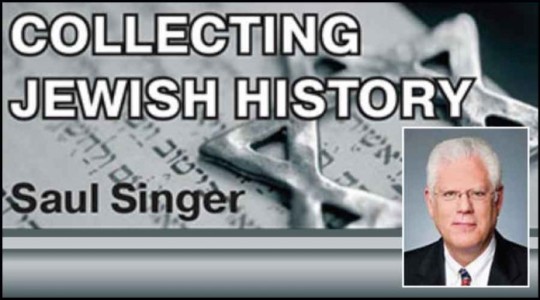
View On WordPress
0 notes
Text
Sharabi brothers harassed in UK after surviving massacre
Neria and Daniel Sharabi survived the Nova music festival massacre on 7 October, heroically saving others, only to be harassed by UK Border Control officers when they arrived in Manchester to talk about their ordeal, Sky News reports. The name Sharabi derives from Sharab, a district in Ta’iz in south western Yemen, where a large and ancient Jewish community settled. It was a centre of Torah learning and distinguished rabbis were born there, including the rabbis Shalom Sharabi,Mordechai Sharabi and Shalom Shabazi.

Daniel and Neria Sharabi (right) were detained for two hours on arrival in the UK
Two Israeli brothers have claimed that they were singled out by Border Force staff because of their passports.
The brothers said they faced antisemitism and were left feeling unsafe, wanting to never return to England again after staff at Manchester Airport allegedly singled them out because of their Israeli passports.
Neria and Daniel Sharabi survived the 7 October Hamas attack on Israel and helped others caught up in the assault on the Nova music festival.
They were invited to the UK by the Jewish Representative Council (JRC) of Greater Manchester to share their story but were detained by the Border Force for more than two hours. A video of the interaction was shared widely online.
Neria told Sky News: “We’re facing this antisemitism and, honestly, if I had heard it from a civilian, it would have been okay because it’s a civilian, but when I hear it from a cop with an official job and he’s supposed to watch me and give me the feeling I’m safe and he does exactly the opposite, I don’t know what to think. After what happened, I’m not feeling safe here and probably I won’t come back here.
Read article in full
Daily Mail report
34 notes
·
View notes
Text
The Fox Hunt: A Refugee’s Memoir of Coming to America Book Audio Online Free

Get now >> The Fox Hunt: A Refugee's Memoir of Coming to America Book Audio Online Free
The Fox Hunt: A Refugee's Memoir of Coming to America Book Audio Online Free
A young man's moving story of war, friendship, and hope in which he recounts his harrowing escape from a brutal civil war in Yemen with the help of a daring plan engineered on social media by a small group of interfaith activists in the West.
Born in the Old City of Sana'a, Yemen, to a pair of middle-class doctors, Mohammed Al Samawi was a devout Muslim raised to think of Christians and Jews as his enemy. But when Mohammed was twenty-three, he secretly received a copy of the Bible, and what he read cast doubt on everything he'd previously believed. After connecting with Jews and Christians on social media, and at various international interfaith conferences, Mohammed became an activist, making it his mission to promote dialogue and cooperation in Yemen.
Then came the death threats: first on Facebook, then through terrifying anonymous phone calls. To protect himself and his family, Mohammed fled to the southern port city of Aden. He had no way of knowing that Aden was about to become the heart of a north-south civil war, and the battleground for a well-funded proxy war between Iran and Saudi Arabia. As gunfire and grenades exploded throughout the city, Mohammed hid in the bathroom of his apartment and desperately appealed to his contacts on Facebook.
Miraculously, a handful of people he barely knew responded. Over thirteen days, four ordinary young people with zero experience in diplomacy or military exfiltration worked across six technology platforms and ten time zones to save this innocent young man trapped between deadly forces- rebel fighters from the north and Al Qaeda operatives from the south.
The story of an improbable escape as riveting as the best page-turning thrillers,The Fox Hunt reminds us that goodness and decency can triumph in the darkest circumstances.
The Fox Hunt: A Refugee's Memoir of Coming to America Book Audio Online Free
0 notes
Photo


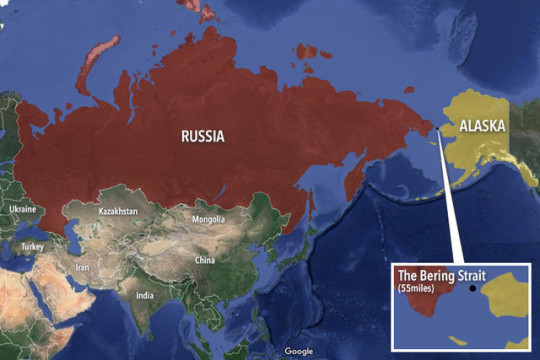







2017 THE (MAYA THERMONUCLEAR ARAMEGADDON OF RUSSIA’S TO TURN THE U.S.A OF TRUMP TO RADIOACTIVE ASH) AND (PUTIN READY TO INVADE THE STATE OF ALASAKA): 1- THE (HOMOSEXUAL FUCK RUSSIAN GAY MAN PUTIN OF FUCK PETER NUKE RUSSIANS FUCKING THE GREAT) IS (NUKE DEMANDING THE STATE OF ALASKA BACK TO RUSSIA’S SOVERNITY) AND (WITHOUT ANY NUKE CONDITIONS). PUTIN SPEAKING INSIDE NUKE (THE KERMLIN IN FUCK NUKE MOSCOW OF NUKE RUSSIA) AND (THERMONUKE THE FORMER SOVIET FUCK NUKE THE DEAD UNION) TOLD THE (RUSSIAN’ KERMLIN CRIME MEN AND NUKE THE KILLERS OF JESUS CHRIST IN 1967) (CREATED FIRST ARAB ISLAMIC MARXISIT NIMROD NATION TO (KILL AND HIDE) THE (GARDEN OF CREATION HIDDEN IN (SOUTH YEMEN) OF THREE ADAMS AND MOTHER EVE) AND (2ND UFOS COMING THIRD ADAM 2ND NUCKEAR BABY CHRIST CHARIOTS OF GOD SHOT DOWN WARS) ( THE THIRD ADAM UFOS ENDED WAR CRASH GULF OF ADEN BRITISH COLONY FEDERATION OF SOUTHERN ARABIA) AND PRIOR TO (THE CREATION OF TWO NUKE ARABS NATIONS GOT FUCKED ENDED ISLAM TWO FUCK NUKE ALLAHS IN TWO YEMEN) (1967 TO 2017) AND (THE ILLIUMINITIES CONCEALED BATTLE OF NUKE ARAMEGADDON WORLDWIDE SAVAGE WARS) (1962 TO 1967) BY CREATING: THE (PEOPLES DEMOCRATIC SOCIALISTS REPUBLIC OF SOUTH YEMEN) (1967 TO 1990). 2- PUTIN SAID: THE (SALE OF ALASAKA TO FOREINlGERS BY THE FUCKING DEAD GAY RUSSIAN CEZER) FOR (7.5 MILLION) IS (VOID AND NULL) AND (WORLD WAR III ALREADY BEGAN IN 2015 IN (YEMEN) BY THE FUCKERS OF )(ISLAM FUCKING THIER JEWS) ARE (SAUDIA NUKE ARABIA) AND (NUKE ZIONIST FAKE HOLY FUCK LAND OF NUKE JEWS GOT FUCKED BY ISREAL (USED NUKED USED NUKED) ON (SANNA, THE CAPITAL OF NORTH YEMEN) WHILE (JESUS CHRIST IS WALKING OF EARTH IN NUKE AMERICA 2017). https://youtu.be/OTE_Eshm2xw https://youtu.be/OTE_Eshm2xw https://youtu.be/OTE_Eshm2xw 3- THE (TIME IS OVER FOR DRILLING OIL AND RUNNING GAS PIPE LINES ACROSS THE OCEANS TO MAINLAND AMERICA) STEALING RUSSIA OWN RESOURCES NEEDED TO FEED THE COMING RUSSIAN EMPIRE OF (PETER NUKE THE RUSSIANS FUCKING THE GREAT) (RUSSIA IS FULLY READY NUKE EQUPIED FOR RUSSIA’S SUPER POWER (NUKE NATO INVISION) FROM (ALASAKA BIBLE PROPHECY NUKE BABYLON THE GREAT IS THE U.S.A) TO (DAMASCUS NUKE BIBLE PROPHECY ISIAIH 17 NUKE SYRIA). THE (RUSSIAN HOMOSEXUAL FUCK GAY MAN VALDIMER FUCKING PUTIN) (NUKE WARNS TRUMP TO NUKE AMERICA) THAT (NUKE RUSSIA IS THE ONLY NATION ON EARTH) THAT CAN (TURN THE U.S.A INTO RADIOACTIVE FUCK NUKE ASH 2017): https://youtu.be/Ey3WN-fBz4A https://youtu.be/Ey3WN-fBz4A https://youtu.be/Ey3WN-fBz4A
1 note
·
View note
Text
Events 1.13
532 – The Nika riots break out, during the racing season at the Hippodrome in Constantinople, as a result of discontent with the rule of the Emperor Justinian I.
1435 – Sicut Dudum, forbidding the enslavement of the Guanche natives in Canary Islands by the Spanish, is promulgated by Pope Eugene IV.
1547 – Henry Howard, Earl of Surrey, is sentenced to death for treason, on the grounds of having quartered his arms to make them similar to those of the King, Henry VIII of England.
1793 – Nicolas Jean Hugon de Bassville, representative of Revolutionary France, is lynched by a mob in Rome.
1797 – French Revolutionary Wars: A naval battle between a French ship of the line and two British frigates off the coast of Brittany ends with the French vessel running aground, resulting in over 900 deaths.
1815 – War of 1812: British troops capture Fort Peter in St. Marys, Georgia, the only battle of the war to take place in the state.
1822 – The design of the Greek flag is adopted by the First National Assembly at Epidaurus.
1833 – United States President Andrew Jackson writes to Vice President Martin Van Buren expressing his opposition to South Carolina's defiance of federal authority in the Nullification Crisis.
1840 – The steamship Lexington burns and sinks four miles off the coast of Long Island with the loss of 139 lives.
1842 – Dr. William Brydon, an assistant surgeon in the British East India Company Army during the First Anglo-Afghan War, becomes famous for being the sole survivor of an army of 4,500 men and 12,000 camp followers when he reaches the safety of a garrison in Jalalabad, Afghanistan.
1847 – The Treaty of Cahuenga ends the Mexican–American War in California.
1849 – Establishment of the Colony of Vancouver Island.
1849 – Second Anglo-Sikh War: Battle of Chillianwala: British forces retreat from the Sikhs.
1888 – The National Geographic Society is founded in Washington, D.C.
1893 – The Independent Labour Party of the United Kingdom holds its first meeting.
1893 – U.S. Marines land in Honolulu, Hawaii from the USS Boston to prevent the queen from abrogating the Bayonet Constitution.
1895 – First Italo-Ethiopian War: The war's opening battle, the Battle of Coatit, occurs; it is an Italian victory.
1898 – Émile Zola's J'accuse…! exposes the Dreyfus affair.
1908 – The Rhoads Opera House fire in Boyertown, Pennsylvania kills 171 people.
1910 – The first public radio broadcast takes place; a live performance of the operas Cavalleria rusticana and Pagliacci is sent out over the airwaves from the Metropolitan Opera House in New York.
1915 – The 6.7 Mw Avezzano earthquake shakes the Province of L'Aquila in Italy with a maximum Mercalli intensity of XI (Extreme), killing between 29,978 and 32,610.
1920 – The Reichstag Bloodbath of January 13, 1920, the bloodiest demonstration in German history.
1935 – A plebiscite in Saarland shows that 90.3% of those voting wish to join Nazi Germany.
1939 – The Black Friday bushfires burn 20,000 square kilometers of land in Australia, claiming the lives of 71 people.
1942 – Henry Ford patents a soybean car, which is 30% lighter than a regular car.
1942 – World War II: First use of an aircraft ejection seat by a German test pilot in a Heinkel He 280 jet fighter.
1950 – British submarine HMS Truculent collides with an oil tanker in the Thames Estuary, killing 64 men.
1950 – Finland forms diplomatic relations with the People's Republic of China.
1951 – First Indochina War: The Battle of V��nh Yên begins.
1953 – An article appears in Pravda accusing some of the most prestigious and prominent doctors, mostly Jews, in the Soviet Union of taking part in a vast plot to poison members of the top Soviet political and military leadership.
1958 – The Moroccan Army of Liberation ambushes a Spanish patrol in the Battle of Edchera.
1963 – Coup d'état in Togo results in the assassination of president Sylvanus Olympio.
1964 – Anti-Muslim riots break out in Calcutta, in response to anti-Hindu riots in East Pakistan. About one hundred people are killed.
1964 – In Manchester, New Hampshire, fourteen-year-old Pamela Mason is murdered. Edward Coolidge is tried and convicted of the crime, but the conviction is set aside by the landmark Fourth Amendment case Coolidge v. New Hampshire (1971).
1966 – Robert C. Weaver becomes the first African American Cabinet member when he is appointed United States Secretary of Housing and Urban Development.
1968 – Johnny Cash performs live at Folsom State Prison.
1972 – Prime Minister Kofi Abrefa Busia and President Edward Akufo-Addo of Ghana are ousted in a bloodless military coup by Colonel Ignatius Kutu Acheampong.
1977 – JAL Cargo Flight 3054, a Douglas DC-8 jet, crashes onto the runway during takeoff from Ted Stevens Anchorage International Airport, killing five.
1978 – United States Food and Drug Administration requires all blood donations to be labeled "paid" or "volunteer" donors.
1982 – Shortly after takeoff, Air Florida Flight 90, a Boeing 737 jet, crashes into Washington, D.C.'s 14th Street Bridge and falls into the Potomac River, killing 78 including four motorists.
1985 – A passenger train plunges into a ravine in Ethiopia, killing 428 in the worst railroad disaster in Africa.
1986 – A month-long violent struggle begins in Aden, South Yemen between supporters of Ali Nasir Muhammad and Abdul Fattah Ismail, resulting in thousands of casualties.
1988 – Lee Teng-hui becomes the first native Taiwanese President of the Republic of China.
1990 – Douglas Wilder becomes the first elected African American governor as he takes office as Governor of Virginia in Richmond, Virginia.
1991 – Soviet Union troops attack Lithuanian independence supporters in Vilnius, killing 14 people and wounding around 1000 others.
1993 – Space Shuttle program: Endeavour heads for space for the third time as STS-54 launches from the Kennedy Space Center.
1993 – The Chemical Weapons Convention (CWC) is signed.
1998 – Alfredo Ormando sets himself on fire in St. Peter's Square, protesting against homophobia.
2001 – An earthquake hits El Salvador, killing more than 800.
2012 – The passenger cruise ship Costa Concordia sinks off the coast of Italy due to the captain Francesco Schettino's negligence and irresponsibility. There are 32 confirmed deaths.
2018 – A false emergency alert warning of an impending missile strike in Hawaii causes widespread panic in the state.
0 notes
Text
Israel Said Set To Seek $250b Compensation From Arab Countries Plus Iran
Israel Said Set To Seek $250b Compensation From Arab Countries Plus Iran
(THIS ARTICLE IS COURTESY OF THE TIMES OF ISRAEL)
Israel said set to seek $250b compensation for Jews forced out of Arab countries After 18 months of research, first claims being finalized for reported $35b from Tunisia, $15b from Libya, for assets Jews left behind when kicked out after establishment of Israel By TOI STAFF Today, 9:23 pm 0
Jews of Aden, Yemen, awaiting evacuation to…
View On WordPress
0 notes